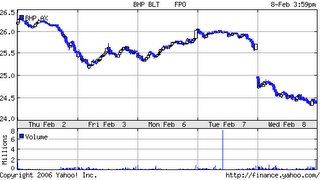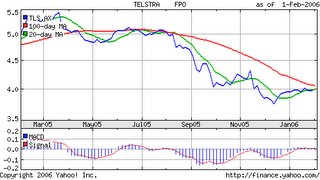Take care before combining gearing, a unit trust, and your super fund writes Tony Negline
May 03, 2006
AUSTRALIAN financial services regulators have a favourite expression: "If it sounds too good to be true, it often is."
This warning is issued to remind investors to be careful before committing to anything too outlandish. Unfortunately, some people never learn.
When it comes to superannuation, which is a long-term investment with attractive tax concessions, there are plenty of ways to destroy a person's retirement nest egg.
And, with self-managed super funds (SMSFs) more problems can arise because the responsibilities of running a fund properly rest with trustees who must be members.
The Australian Taxation Office has repeatedly told us that if a trustee breaks the rules the fund may face consequences which can include taxing the fund's assets (excluding the fund's undeducted contributions) at 48.5 per cent of the assets of the fund.
An old strategy has resurfaced and before acting on it a trustee should seek some very robust advice.
The strategy is presented as a way of building an investor's superannuation assets via personal borrowings.
How does it work? An investor borrows money and places the money in a private unit trust.
The investor's SMSF also invests in the same unit trust.
With the total monies, the unit trust purchases an investment property.
The investor's borrowings are used to earn income -- which would be paid via distributions from the unit trust -- and therefore interest costs and other expenses associated with the property would probably be tax deductible.
Over the years following, the investor directs all of their compulsory and voluntary employer super contributions into their SMSF.
The SMSF trustee invests these new contributions by buying more units in the unit trust.
The investor would then repay the debt by redeeming their unit holding in the trust (the unit trust has the funds to pay out these redemptions because it has the additional investments made by the SMSF).
Over time, the super fund will become the only unitholder in the trust and if the property was sold then the gain would be taxed at concessional tax rates applying to super funds.
It's no exaggeration to say this strategy is very complicated and it would be very easy to make a mistake at some stage through a lack of vigilance by anyone involved in administering the strategy.
From a superannuation legislation point of view there are at least six issues that have to be addressed before a trustee should implement the strategy.
The first point to note is that a super fund cannot invest in anything unless its investment strategy allows that investment.
Further, the fund's trust deed must also allow the investment.
Thirdly, a specific super law does not allow a super fund to loan money or provide any financial assistance to its members or a member's relatives. In August 2001, the tax office said that a SMSF trustee cannot allow any property it holds directly or indirectly to be used as a security for a borrowing by a member or their relatives.
As a result, the property which is purchased by the unit trust cannot be used by the SMSF member as security for the borrowing they enter into in order to invest in the unit trust.
Also, the SMSF cannot allow the member's units in the trust to be used as security for borrowings.
The member would have to use some other asset as security for the borrowing.
In addition, an agreement would have to be in place between the SMSF and the other unit trust investor stating that the investor will only deal with their unitholding in such a way that would not cause the SMSF to lose its access to tax concessions or cause the trustee to breach any super laws.
Fourthly, some SMSF trustees may be tempted to use this strategy to transfer a property they already personally own into a unit trust and have their SMSF purchase units in the trust. Such a strategy might be seen as a handy way of extracting cash from the SMSF.
This can only happen with business real property. That is, it is always used wholly and exclusively in the running of at least one business.
Furthermore, parties deemed to be related to the SMSF (defined as SMSF members, their relatives or entities controlled by the members or their relatives) would not be allowed to rent the property unless it was business real property.
The only exception to this rule would be the situation where the SMSF's unit trust holding represents less than 5 per cent of the market value of the SMSF's total assets.
If the business real property is owned by a trust or company then that trust or company must not have any borrowings and must only be leasing business real property to SMSF related parties
Finally, we come to the sole purpose test. This states that a super fund must only be run for the purposes allowed by super laws.
The main purpose of running a super fund must be to provide retirement benefits for the fund's members. Would this arrangement be deemed to be an elaborate arrangement to channel super contributions into private hands?
It would be ironic if someone entered into the strategy, got its implementation wrong and was penalised as a result.
Tony Negline specialises in superannuation. He may be contacted at www.allthingsconsidered.biz

